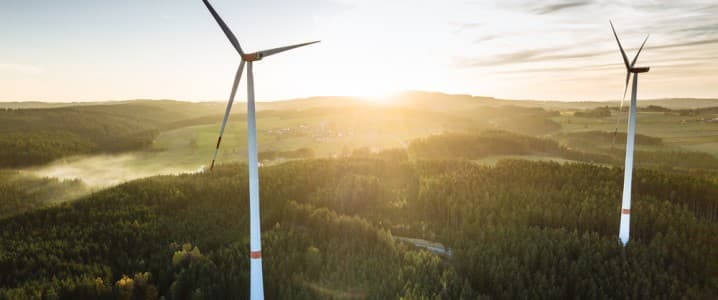Every year it seems that renewable energy companies are looking to produce bigger, more innovative wind turbines than ever before. As governments and private firms pump funding into research and development in renewable energy, operations are becoming more efficient, lower cost, and easier to scale. With Danish firm Vestas once again announcing plans for its tallest-ever wind turbine, what will this mean for the future of the wind energy sector?
Companies are battling it out to create the most innovative renewable energy equipment, whether that be the longest-range EV, the most powerful solar PV, or the tallest wind turbine. With governments around the world offering incentives to energy firms supporting the transition from fossil fuels to green energy sources, the competition has never been stronger.
Vestas, a Danish wind energy firm, announced in September that it would be establishing an onshore wind turbine tower with a hub height measuring 199 meters. The tower will be used with the V172-7.2MW turbine model. The firm said it is “currently the world’s tallest onshore tower for wind turbines.” Vestas is working hand in hand with German company Max Bögl on the project and plans to establish locations in Germany and Austria.
The giant structure is expected to help Vestas access stronger and more constant wind power, to increase the turbine’s electricity production. The firm stated, “Especially for projects in Central Europe that are generally constrained in available planning space, this makes an important contribution to maximising the production of green electricity.” It plans to commence operations in 2025.
The tower of a wind turbine is highly important to its structure, The nacelle and blades rest on top of the tower, with the hub height being measured from the ground to the middle of the turbine’s rotor. The U.S. Department of Energy (DoE) highlighted the significant growth in turbine height in recent years, with onshore hub height increasing by 66 percent since 1999, to 94 metres in 2021. This shows how far wind energy technology has come just this year, with Vestas’s highly ambitious project marking a huge development.
However, other infrastructure will also have to be developed in line with progress in renewable energy operations. For example, ports, highways, and ships must be adapted to cope with the giant wind structures, particularly if we’re moving to an era of ‘super-sized’ turbines.
While Vestas is out ahead at the moment, it may not be long until other energy companies catch up. MingYang, China’s largest wind turbine manufacturer, announced plans last year for a 16 MW turbine. This is a significant feat considering that in 2017 the highest-capacity offshore turbine was 8 MW.
Meanwhile, earlier this year, Siemens Gamesa said it would be delivering sixty SG 14-222 DD offshore wind turbines to the Moray West offshore wind farm in the UK. The wind turbines have a capacity of 14.7 MW eachand are armed with an additional PowerBoost feature to improve performance. Siemens will be producing 180 B108 IntegralBlades, each measuring 108 metres, in its Hull factory in northeast England.
In the U.S., its wind energy industry is catching up to the European and Asian competition. General Electric (GE) Renewable Energy has released its Haliade-X offshore turbine, with a 260-metre hub height and 107-metre blades. Although GE took a hit last month when it lost a court case against Siemens Gamesa. A U.S. federal judge in Boston ruled that GE could no longer make, use, offer for sale, import, or install the Haliade-X turbines in the U.S. due to patent infringement.
GE was deemed to have infringed Siemens Gamesa’s ’413 patent. The judge believed that Siemens would suffer “irreparable injury if GE is not enjoined from infringing” the patent. Two GE projects were except from the ruling – the 804 MW Vineyard Wind 1 off Massachusetts and the 1.1 GW Ocean Wind 1 off New Jersey – where GE will be expected to pay Siemens royalties of $30,000 per megawatt of rated capacity for each of the 62 Haliade-X wind turbines installed.
But as the White House announces a target of 15 gigawatts of floating offshore wind capacity by 2035, competition amongst U.S. wind turbine manufacturers to develop innovative new equipment is likely to continue. A statement from the White House outlined, “The Biden-Harris Administration is launching coordinated actions to develop new floating offshore wind platforms, an emerging clean energy technology that will help the United States lead on offshore wind.”
As wind energy companies are releasing new and improved turbines year after year, there is no sign of slowing in sight in the race to 20 MW. It is not certain whether size or other equipment innovations will win in the battle to produce the most wind power, but ongoing investment in the sector means the winner is likely not far away.
